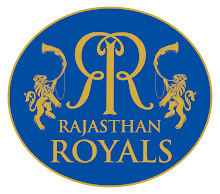- A kaleidoscope is a toy that uses light and mirrors to reflect objects and create patterns. There are many different types of kaleidoscopes that create different patterns, but all use the same basic laws of physics, manipulating light and reflection.
- The first part that is essential to the kaleidoscope is a reflective material. Most kaleidoscopes use mirrors. Long, thin mirrors are set so that they are facing one another. Two to four mirrors can be used, depending on the end pattern desired. They are usually set in cardboard, but kaleidoscopes can be made out of any round, hollow material. Homemade kaleidoscopes can be made using a paper towel roll with aluminum foil for a reflective surface. Older kaleidoscopes were crafted with tin. Some versions use three pieces of blown glass that are set in a triangle.
- One end of the kaleidoscope, called the object chamber, contains the objects to be reflected. A homemade kaleidoscope can be made using beads, string and paper clips. The standard kaleidoscope is made with bits of colored plastic or glass. The end of the kaleidoscope is closed off with glass or plastic. This not only keeps the objects contained, but filters light through to reflect the images. On some versions, the end of the kaleidoscope rotates so that different patterns can be easily created. Homemade versions can be rotated by hand for the same effect. There are also types that hold glass marbles for the objects; marbles can be interchanged for different patterns.
- The other end of the kaleidoscope is for viewing. It can be closed off as well, as long as there is a small hole for viewing. The hole is held up to the eye so that the eye looks down through the mirrors and can see the patterns created by the reflections.
- When looking through the hole, light filters through the plastic or glass on the end of the object chamber and illuminates the objects, which then reflect off of all of the mirrors. The reflections bounce off of one another as the light passes through the tube. The eye sees these bouncing reflections, creating the patters. As the kaleidoscope rotates, the objects shift in the chamber, and the reflection changes, creating new patterns. The concept is simple, but creates a wonderful end result that delights and entertains.
Time
How Does A Kaleidoscope Work?
Subscribe to:
Post Comments (Atom)






2 comments:
very helpful thank you this has helped me with home schooling
very hopeful thanks this helped much
Post a Comment